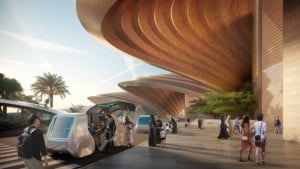 By Greg Van Gompel
By Greg Van Gompel
Related: New rides rules issued for the Canadian province of Alberta / California: Requesting Zip Code information from Amusement Park guests gets more complicated
On July 5, 2005, Dr. Smriti Nalwa appellant, an OB/GYN physician and surgeon, took her son, age 10 and daughter, age 7, for a day of fun at Great America Amusement Park, located in Santa Clara California. While there, the family decided to ride the two minute Rue Le Dodge bumper car ride. Dr. Nalwa chose to ride as a passenger in the bumper car with her son while her daughter went in a bumper car by herself. During the ride, appellant‘s bumper car was hit head-on and then immediately hit from behind. Feeling “pushed around, ” and needing to “brace” herself, Dr, Nalwa put her hand on the dash and fractured her wrist. The park had no warning regarding the prohibition of head-on collisions.
The broad question before the Court was whether, and under what circumstances, an amusement park owner can be held liable for such a personal injury. The more specific question is whether the primary assumption of risk exception applied in this case, barring recovery.
The risk of being bumped and breaking a bone, according to Great America, is inherent in the nature of a bumper car ride; therefore, recovery is barred by the primary assumption of risk doctrine. According to the Court, Great America’s position was opposite of both Californ ia public policy and the law of torts and it declined to extend the doctrine of primary assumption of risk to amusement park rides.
ia public policy and the law of torts and it declined to extend the doctrine of primary assumption of risk to amusement park rides.
The Court reasoned that while amusement parks in 21st century California are still not retreats for meditation for the timid, riders do get assurances of safety from a stringent regulatory scheme. The regulatory scheme of the State of California is not to excuse possible dangerous conditions in order to increase the thrill of a ride. Instead, rider safety is of paramount concern.
The Court found that public policy supports the imposition of a duty on amusement park owners, to protect the public from the possible grave dangers of amusement park rides. (Cal. Code Regs, tit. 8, § 3900.) Most recently, the California Supreme Court in the Gomez case (35 Cal. 4th 1125 (2005)) reaffirmed this duty of “utmost care” imposed on proprietors of amusement park rides.
The Court went to great lengths to emphasize that Cedar Fair, L.P. had taken steps to “eliminate or reduce the likelihood of head-on collisions at every other park prior to appellant‘s injury” (actually the Court was only looking at the former Paramount Parks and not referring to all parks in that Cedar Fair operates). However at Great America, the only precaution in place was for staff to admonish riders after a head-on collision had occurred. Since Cedar Fair had eliminated or reduced the risk at its other four parks, it can hardly claim that taking additional steps to minimize this risk of head-on collisions would have altered the nature of the bumper car experience.
For these reasons, the Court concluded that there remained triable issues of material fact which cannot be resolved as matter of law. According to the Court, “it is for the trier of fact to determine, given the respondent‘s exclusive control over the design and operation of the ride, and the obvious steps they could, and ultimately did, take to minimize the risks of head on collisions, whether respondent breached its duty to appellant, and whether that failure caused appellant‘s injury.”
Dr. Nalwa’s complaint also alleged a cause of action for common carrier liability. On this cause, the Court held that it will also be for the trier of fact to determine whether the nature of the bumper car ride raised Great America to the status of a common carrier as set forth in Gomez case. Justice Duffy wrote a 17 page dissent in this case.
I find it interesting that the Court emphasized Cedar Fair’s knowledge that head-on collisions must be unsafe because in 2005 Paramount Parks changed it bumper cars to allow only unilateral direction on its other park rides. I’m wondering if the court’s opinion would change it was shown that common industry design provides for both types of rides. Although the Court emphasized the California regulatory scheme, it never made mention that the government arm responsible for enforcing that regulatory scheme never had a problem with the ride as it existed.
As noted in the facts of the case, the California Department of Industrial Relations, Division of Occupational Health and Safety (DOSH) inspected the ride annually and in 2004 and 2005 found no safety-related problems with the ride. Also fascinating in the facts of this case is that Dr. Nalwa is a surgeon and should have prior medical knowledge of the stresses caused to extremities when bracing for the impact of a pending collision.
If you operate and/or own a bumper car, you’ll definitely want to keep an eye and ear open for the resolution of this case.








